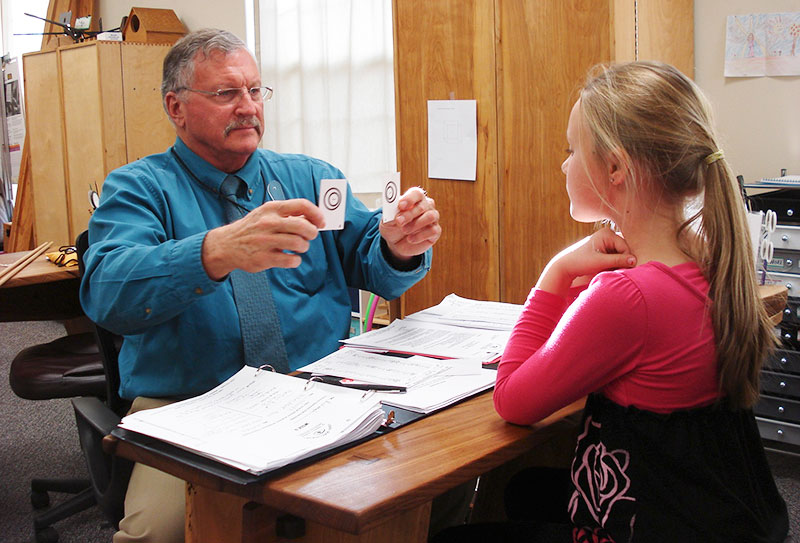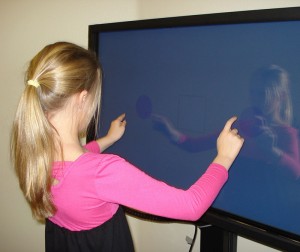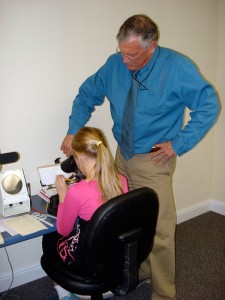Have you felt helpless about your child’s school performance? You are not alone. Did you know vision therapy can help?
On the Children’s Vision Information Network website, a parent explains the progression of her daughter Megan’s vision therapy experience. When Megan began, “She hated to read. She would lose her place, put words in or leave words out and sometimes she would turn words around. It was a constant battle last year to get her to do her homework, often taking two or three hours to do work that should have been finished in 30 minutes.”
Megan’s grades were affected: “Her report cards for the last two years were terrible. She was getting C’s and D’s. Then we found out that she had an eye teaming and tracking problem which didn’t let her eyes work together when she read. We started vision therapy to retrain the way she used her eyes, and we worked really hard. Now we’re seeing the good results. On her last report card she had all B’s and even one A.”
Most importantly Megan now enjoys reading. “She has read 40 books for her school reading program already this year.” And homework? It’s no longer an issue. “She does her assignments as soon as she gets home from school and is finished in half an hour. The whole family is enjoying the results of her therapy.”
You may know a child like Megan. Often there’s an assumption made that because a child has 20/20 eyesight, his or her visual system can also function up close, such as when reading.
There are many visual skills required for reading, spelling, memorization or looking from desk to whiteboard that can greatly affect a child’s performance in the classroom when these skills are lacking. Many children struggle with undiagnosed vision issues, yet frequently educators and health professionals are unaware of the relationship between vision and low performance with these classroom activities; some believe there is no relationship whatsoever.
Much of this controversy hinges on a philosophy of holistic, sensorimotor development versus a structural approach to vision. Some vision professionals disregard the fact that the two eyes must work together as a team (binocular vision) to optimally process and retain visual information.
Developmental (or behavioral) optometry is the field that addresses the evaluation and treatment of individuals with disorders of the visual system, with an emphasis on binocular vision and eye movement.
For efficient and comfortable reading and close work, the eyes need to focus clearly, scan, and move from line to line. For memorization, one must be able to retain and reproduce a visual image accurately.
One of the most prevalent visual deficits diagnosed is Convergence Insufficiency (CI). In this condition the individual may have 20/20 visual acuity at distance, but when the eyes attempt to converge and track up close (at reading distance) the eyes cannot work together.
CI results in blurred, double vision which can lead to suppression (one eye turning off) and many adaptive problems in the classroom, including headaches, inattention, fatigue, avoidance of reading and other close tasks, and lack of comprehension.
A developmental optometrist assesses these issues by first providing a Binocular Vision Evaluation (after a comprehensive eye exam to assure visual health and to determine visual acuity and the possible need for glasses or contact lenses).
A binocular vision evaluation includes tests for eye tracking, eye teaming, sustained focus and accommodation, visual memory, visualization, sequencing, information processing capacity, and visual-motor and sensory integration.
Once levels of performance/processing are identified, a developmental optometrist can prescribe a specific course of therapy utilizing lenses, prisms and computerized training programs, as well as visual-motor activities such as a balance board, metronome, Marsden ball and trampoline to address visual integration with rhythm and timing.
Vision therapy can be helpful to both children and adults. Overall, its goal is to treat vision problems that cannot be successfully resolved with eyeglasses, contact lenses and/or surgery alone. By identifying and correcting specific problem areas, vision therapy can eliminate many of the underlying causes of learning difficulties and help people achieve clear, comfortable binocular vision.
The normal course of in-office vision therapy may involve two sessions per week for several weeks, or in more complicated cases, for several months.
Problems that vision therapy can address include difficulty keeping eyes properly aligned either when reading or at a distance (crossed or wall eyes), blurred vision in one eye (causing “lazy eye”), poor visual processing skills, and other eye movement disorders and issues that can cause attention problems, fatigue and headaches.
Vision problems associated with developmental disabilities, acquired brain injury (i.e., from a stroke) or head trauma are being addressed by a growing branch of behavioral optometry referred to as neuro-optometry.
Another form of vision therapy is known as Sports Vision Training (VT). Sports VT has been used by many Olympic and professional athletes to enhance performance by improving eye-hand coordination, speed and timing, giving these athletes an edge over competitors.
In the foreword of the book Dear Jillian: Vision Therapy Changed My Life, Too by Robin and Jillian Benoit, Arizona Cardinals All Pro Wide Receiver Larry Fitzgerald credits vision training for his success in both football and his academic career: “As I often say, there is definitely a connection between the vision therapy I did as a child and my performance on the football field.”
If you think vision therapy can enhance your child’s (or your own) wellbeing, ask your family optometrist if he or she provides vision therapy or can make a referral to a colleague who does.
For more information and resources about vision therapy, visit http://www.optometrists.org/Redding and click on Vision Links.
Posted in: Health & Nutrition
Comment Policy: All viewpoints are welcome, but comments should remain relevant. Personal attacks, profanity, and aggressive behavior are not allowed. No spam, advertising, or promoting of products/services. Please, only use your real name and limit the amount of links submitted in your comment.
You Might Also Like...

How Parents of Kids with Food Allergies Can Support Nonallergic Siblings
I NEED pizza!” my 6-year-old screams from our minivan’s back seat. I inhale slowly to avoid yelling back. A few hours earlier I was crouched over my 4-year-old, giving her […]
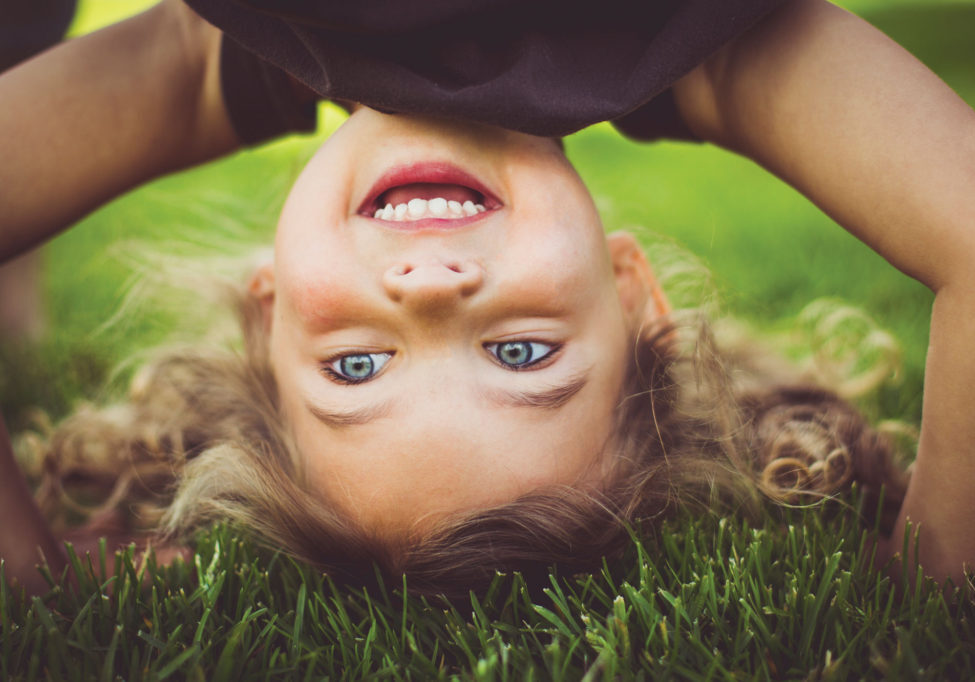
Fun Ways Nature Helps Reduce Stress
Our kids are living with a lot of stress these days, including the uncertainty of schooling amid the pandemic, and navigating social media, along with the “normal” stressors of growing […]
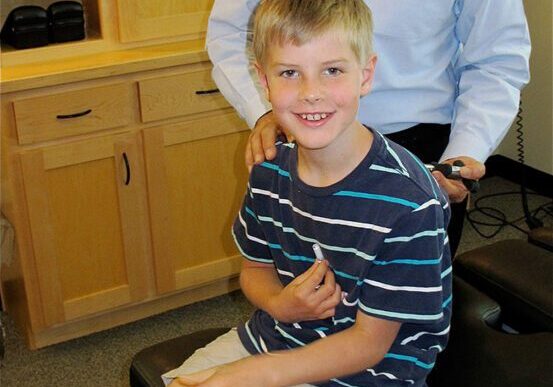
Kids With Food Allergies, Sensitivities & Intolerances – Drug-Free Alternatives For Treatment
Justin, age 11, suddenly developed asthma “out of nowhere.” His mom, a health care professional, did not want to follow the traditional treatment of steroids inhalers due to their long-term […]
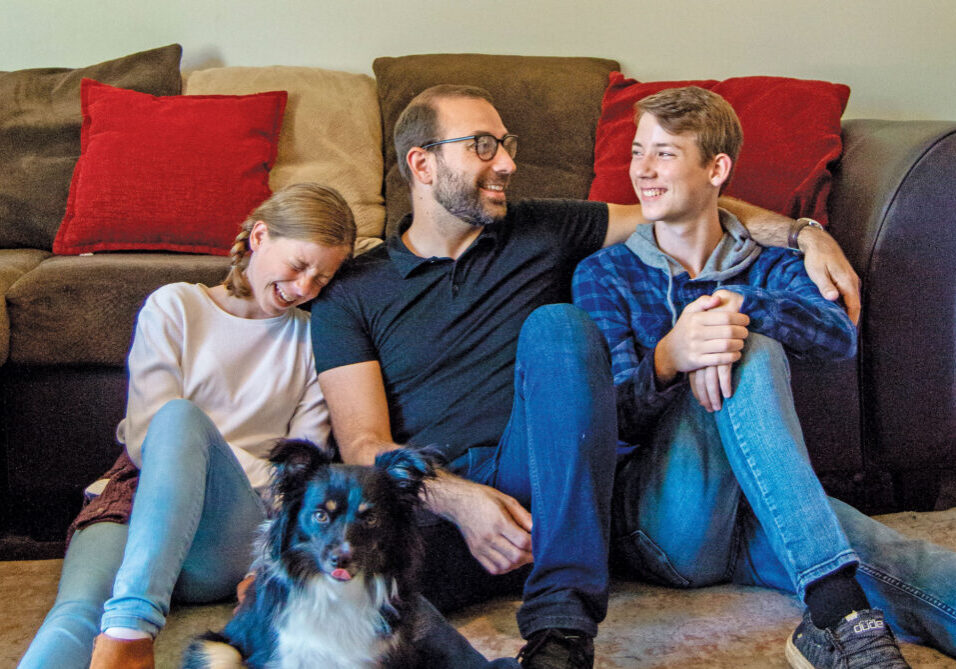
Science Says Fathers Need to Step Up to Increase Children’s Wellbeing
Dads are playing a greater role than ever before in raising their children and being a “stay-at-home dad” is no longer as frowned upon as it was only a few […]


